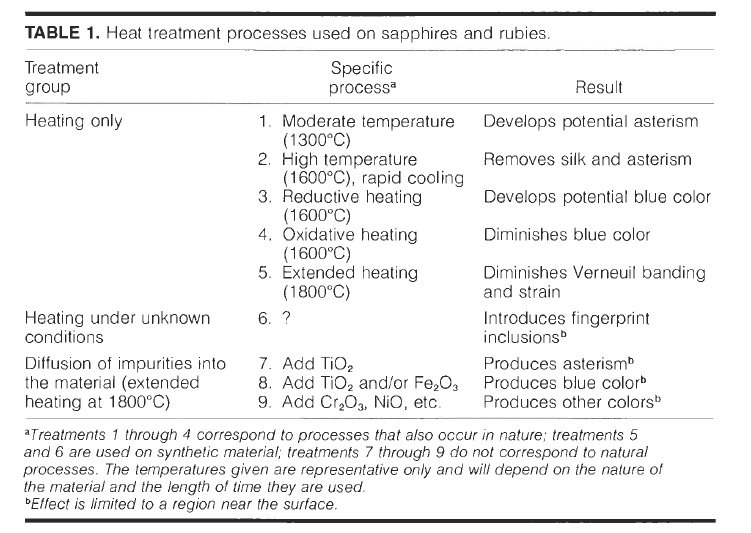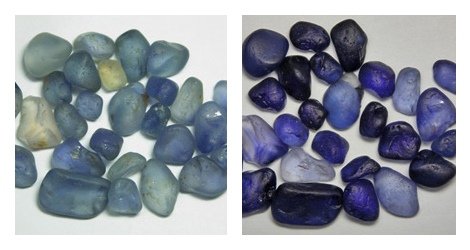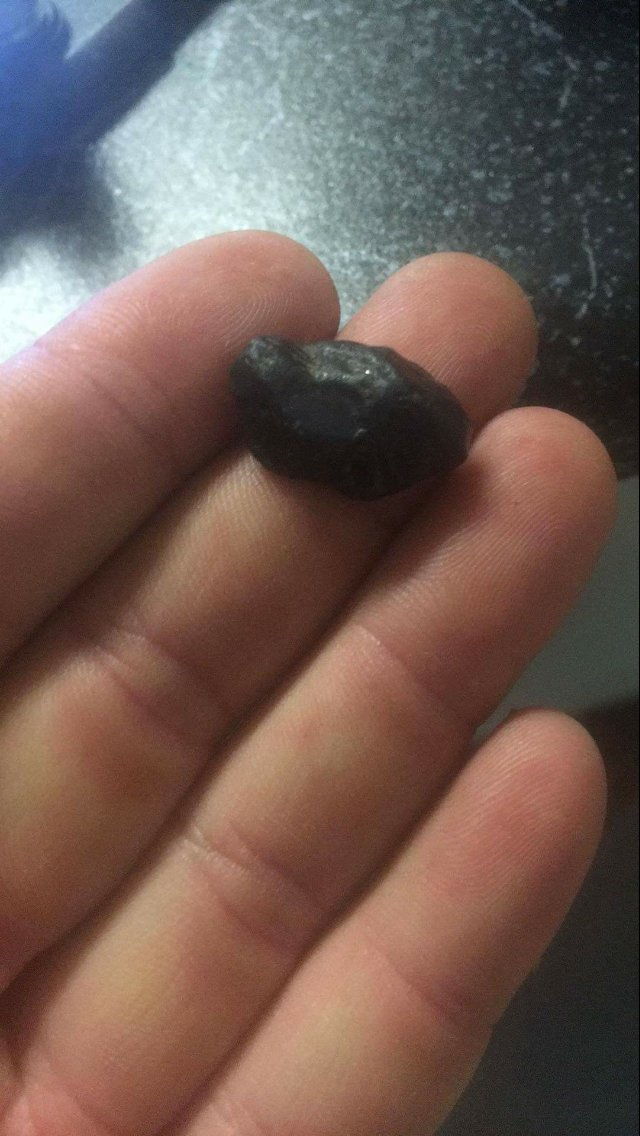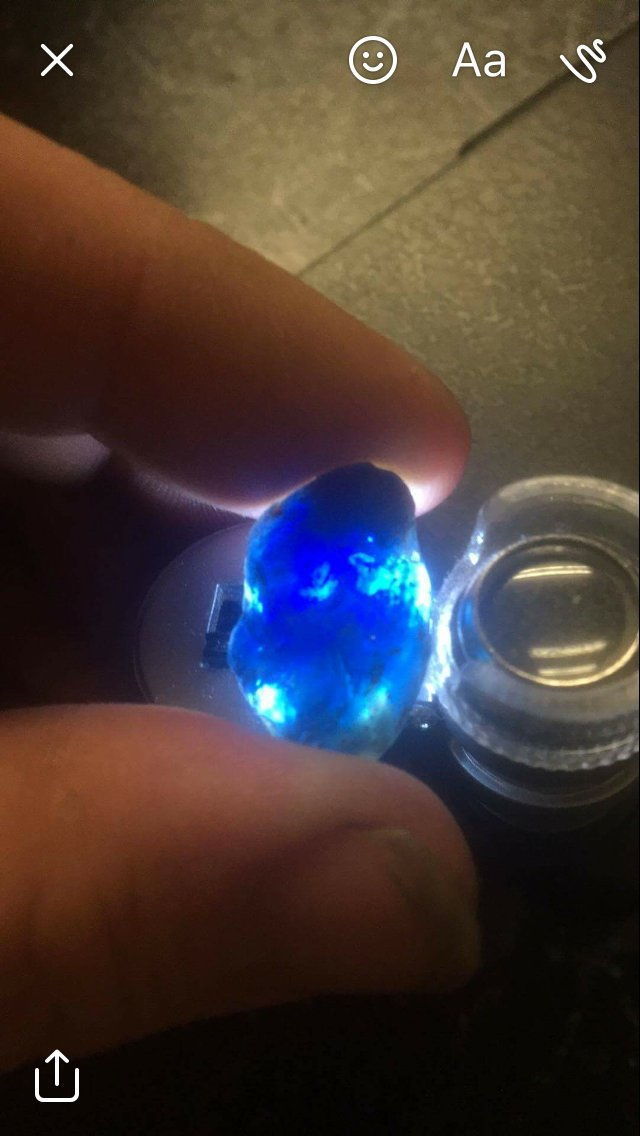You are using an out of date browser. It may not display this or other websites correctly.
You should upgrade or use an alternative browser.
You should upgrade or use an alternative browser.
Faceting
- Thread starter Purdon85
- Start date

Help Support Prospecting Australia:
This site may earn a commission from merchant affiliate
links, including eBay, Amazon, and others.
- Joined
- Jun 24, 2014
- Messages
- 316
- Reaction score
- 837
Good looking rock with some light through it. I have a feeling it will come up pretty dark though. If you put it on a piece of white paper under normal light conditions the colour you see is what you'll get. Most of the time. (There are exceptions.)
- Joined
- Mar 21, 2017
- Messages
- 1,187
- Reaction score
- 5,596
Nice colour!I have the same with a garnet, beautiful blood red but black without light through it 
Kingsolomon "Barney" hasn't been on here in quite a while, you can find him on facebook on his page "Australian gemstone faceting".
Cheers
Cheers
Could still cut a really nice stone even if it is a bit dark, I actually don't mind a dark sapphire to be honest.
Get it cooked.
Unless of coarse you like a black blue sapphires or are worried about it's no longer 'natural'. Heat treatment will make a dark sapphire like that more attractive (in the overall opinion) and therefore valuable. After all they don't heat treat to reduce value of stones.
Unless of coarse you like a black blue sapphires or are worried about it's no longer 'natural'. Heat treatment will make a dark sapphire like that more attractive (in the overall opinion) and therefore valuable. After all they don't heat treat to reduce value of stones.
Where or who would be the best person to see about getting it looked at as far as getting it cut? At the moment I am looking at joining a local lapidary club. but this sapphire was one found by my great grandmother so want the best possible cut I can get from it or if not the best option I would be happy to just keep it as a specimen
- Joined
- Jan 2, 2018
- Messages
- 373
- Reaction score
- 315
First of all, where are you located?
Put some Vicks Vaporub, or RP7 on it and hold it to the sunlight without a torch or place it on a mirror on a matchstick, etc, and see what comes out the bottom. If it is dark now it will be dark as a cabochon, but faceting at the right angle, in the right design may and should open it up a bit and let some light in, depending on what light comes out of the bottom.
You have two photos there, the first looks like it has some star refraction in it, the second appears to be the opposite side to the first one which would make a good table.
I have recently cut a sapphire that throws blue framing around a Mt Fuji in the centre but at first appearances the stone looked to be a dead black with just a little blue on the edges.
Put some Vicks Vaporub, or RP7 on it and hold it to the sunlight without a torch or place it on a mirror on a matchstick, etc, and see what comes out the bottom. If it is dark now it will be dark as a cabochon, but faceting at the right angle, in the right design may and should open it up a bit and let some light in, depending on what light comes out of the bottom.
You have two photos there, the first looks like it has some star refraction in it, the second appears to be the opposite side to the first one which would make a good table.
I have recently cut a sapphire that throws blue framing around a Mt Fuji in the centre but at first appearances the stone looked to be a dead black with just a little blue on the edges.
G
Guest
Heat treating a stone because it is dark will only help if it has rutile inclusions it will not help if its dark because of the green cross table also heat treating will decrease the value by up to 50% if you want to sell the stone to a serious buyer
Dave
Dave
sapphireminer61 said:Heat treating a stone because it is dark will only help if it has rutile inclusions it will not help if its dark because of the green cross table also heat treating will decrease the value by up to 50% if you want to sell the stone to a serious buyer
Dave
Not arguing but interested. What problems does the green cross table cause. Referring to this article here: Just want to understand the mechanics.
This process is not for the removal of rutile as that requires a different process but "is used to lighten dark blue, "inky"
Australian sapphires"
PROCESS 4:
LIGHTENING OF BLUE SAPPHIRE
If blue sapphire is heated for an extended period
(hours to a day or so) in an oxidizing atmosphere
(air or pure oxygen), all of the iron may be converted
gradually to Fer3+:
The result is the slow removal of one of the essential
coloring ingredients, Fe2+, on the left side
of equations 3 and 4, thus lightening the blue
color. If the process is continued long enough, a
virtually colorless stone may result. This treatment
has been described by Jobbins (1971)) Eigenmann and Gunthard (19721, Harder (1980), and
Schmetzeqand Bank (1980). If an underlying yellow
is also' present, the final color may be green
or yellow; a purple sapphire that also contains
some chromium could lose the blue color entirely
and end up as ruby (the oxidation has no effect on
the red chromium coloration); and so on. Temperatures
in the 1000 to 1700 range may be
used, and this treatment can be reversed by using
process 3; identifying characteristics are similar
to those for process 3
Process 4 is used to lighten dark blue, "inky"
Australian sapphires (Gunaratne, 1981), sometimes
producing a pronounced green dichroic direction
in the stone. Undoubtedly, it has also
been applied extensively to purplish and brownish
Thai rubies, which were so common at one
time but now are seldom seen (Crowningshield
and Nassau, 1981). This process as used in Sri
Lanka has been described by Gunaratne (1981);
the reported difficulties in obtaining consistent
results probably derive from the use of ch
G
Guest
Hi Mr Magoo if you have a blue table and green cross table the stone may look a nice blue when back lit through the table but when cut they will be dark to black with no colour play depending on how dark the green is .If the heating of the stone will lighten the dark blues you would think the big miners wouldnt be selling dark blues for a fraction of what a light blue sells for they would heat treat the lot and get top price I know thats what I would be doing. Most blues found around Sapphire area have green cross tables.I hope this helps .
Dave
Dave
- Joined
- May 1, 2014
- Messages
- 1,958
- Reaction score
- 2,530
That was my understanding as well - the heat treating of sapphires commonly referred to as "cooking" is an attempt to remove or reduce the rutile "silk" which can improve the clarity of a somewhat silky stone.
But it can't actually lighten a dark-coloured stone. My father has had many stones cooked over the years but I don't recall any of them getting any lighter, just improving in clarity.
But what Mr Magoo has mentioned is interesting. While I've never heard of dark sapphire being lightened by heat treatment, many stones have the colour lightened or altered by heat treatment, tanzanite being one example. Zircon is easily lightened by heating and I've turned a mid-orange Rubyvale zircon colourless very quickly with a little propane torch. I've turned translucent white chalcedony from Riverslea near Rockhampton orange by heating it (and also cracked it) and even changed the colour of tiger eye by heating over a gas BBQ flame. Lots of fun to experiment with I even took a big bomby sapphire and blasted it with a full-sized oxy until the stone was glowing white. But it would neither change colour nor melt, even though the same torch would quickly melt sand into black glass.
I even took a big bomby sapphire and blasted it with a full-sized oxy until the stone was glowing white. But it would neither change colour nor melt, even though the same torch would quickly melt sand into black glass.
I believe that the above processes with the chalcedony and the tiger eye (not sure about the zircon but it seems probable) are the result of the sustained high temperature converting the iron present in the stone from one form to another. So heat treatment certainly works to lighten or alter the colour of many stones.
But I haven't heard of it being successful on dark Australian sapphires. If the stone is a deep midnight blue with a dark green cross then they usually end up cutting a stone that essentially looks black (there could be the occasional exception). Such dark stones often look magnificent when they are held to the blazing sun or other strong backlighting but that's usually not what you will see in the faceted stone.
But it can't actually lighten a dark-coloured stone. My father has had many stones cooked over the years but I don't recall any of them getting any lighter, just improving in clarity.
But what Mr Magoo has mentioned is interesting. While I've never heard of dark sapphire being lightened by heat treatment, many stones have the colour lightened or altered by heat treatment, tanzanite being one example. Zircon is easily lightened by heating and I've turned a mid-orange Rubyvale zircon colourless very quickly with a little propane torch. I've turned translucent white chalcedony from Riverslea near Rockhampton orange by heating it (and also cracked it) and even changed the colour of tiger eye by heating over a gas BBQ flame. Lots of fun to experiment with
I believe that the above processes with the chalcedony and the tiger eye (not sure about the zircon but it seems probable) are the result of the sustained high temperature converting the iron present in the stone from one form to another. So heat treatment certainly works to lighten or alter the colour of many stones.
But I haven't heard of it being successful on dark Australian sapphires. If the stone is a deep midnight blue with a dark green cross then they usually end up cutting a stone that essentially looks black (there could be the occasional exception). Such dark stones often look magnificent when they are held to the blazing sun or other strong backlighting but that's usually not what you will see in the faceted stone.
Lefty: I'm also confused which is why I raised the question. I know little about sapphires and even less about heat treatment. I have sent stones away to be cooked and in both cases the rutile was removed and the colour remained pretty much the same. But is this because the treatment taking was only to remove silk, not the process that is used to reduce colour - Oxidative conditions over a long period of time.
That article and the table below (which is IIRC from the GIA. I would imagie the peson who wrote it would be reasonably qualified???
Regarding your experiment regarding the oxy torch. I also tried the same thing with the same result. But in hindsight the conditions were probably not ideal to do anything????

Here's an image of before and after heat treatment although I'm unsure where the stone originated from but it does seem to indicate the blue can be lightened.

That article and the table below (which is IIRC from the GIA. I would imagie the peson who wrote it would be reasonably qualified???
Regarding your experiment regarding the oxy torch. I also tried the same thing with the same result. But in hindsight the conditions were probably not ideal to do anything????

Here's an image of before and after heat treatment although I'm unsure where the stone originated from but it does seem to indicate the blue can be lightened.

- Joined
- May 1, 2014
- Messages
- 1,958
- Reaction score
- 2,530
It appears that pale coloured sapphires from Montana in the US are routinely heated to increase the colour.
Same article says that very dark blue sapphires can rarely be made lighter by heating.
I have some small Montana sapphires but don't think I'll muck around with them.
Yeah, an oxy is a pretty rough way to approach anything, it was just for fun and curiosity. Sapphire has a very high melting point so even an industrial oxy torch probably can't melt them, probably need a plasma cutter or something.
Just for fun, I once tried to make my own "synthetic-but-natural-based" gemstone by pulverising very dark pyrope garnets and Springsure labrodorite (plagioclase feldspar) in a dolly pot meant for crushing gold-bearing quartz and then applied as hot a flame as I could get to the powder.
I failed to create a new synthetic, it just stayed a pinkish powder :lol:
Same article says that very dark blue sapphires can rarely be made lighter by heating.
I have some small Montana sapphires but don't think I'll muck around with them.
Yeah, an oxy is a pretty rough way to approach anything, it was just for fun and curiosity. Sapphire has a very high melting point so even an industrial oxy torch probably can't melt them, probably need a plasma cutter or something.
Just for fun, I once tried to make my own "synthetic-but-natural-based" gemstone by pulverising very dark pyrope garnets and Springsure labrodorite (plagioclase feldspar) in a dolly pot meant for crushing gold-bearing quartz and then applied as hot a flame as I could get to the powder.
I failed to create a new synthetic, it just stayed a pinkish powder :lol:
Most 'Citrine' is heat treated low grade Amethyst Too... Most of the Heat treatment is done under Controlled Conditions... and the 'stone' is allowed to cool over several days... very hard to do at home... I have 'heated' some Mangano Calcite in an oven to 'improve' its Fluorescence.... 400deg for a few hours and let cool in the oven till the next day... Worked a treat.. Haven't tried an Oxy tho... 
LW....
LW....
- Joined
- Jun 24, 2014
- Messages
- 316
- Reaction score
- 837
I looked into heat treatment a while back. The clip below should answer some of the questions here. GIA is a highly reputable source of information and they also have some in depth articles on the subject for paying subscribers.
If you google the processes a bit further you will find that the introduction of different gases into the chamber results in different chemical reactions within the crystal lattice. Don't quote me on this but I distinctly remember reading that the gas that is added bonds with the molecules within the crystal lattice to alter or complete the chemical reactions that stopped when the stone cooled off after being deposited. They claim they don't add chemicals and fluxes to the stone but it sounds like heat treatment with introduced gases is still adding something to the stone. From my understanding the process in the video is very different from heating to remove rutile which is the only true "natural" treatment (my opinion).
As far as I am concerned heat treated stones should not be worth a cracker compared to natural stones and yet the thieves that are the major jewellery stores, still sell crap with a massive mark up. If its not created, its such a dark sapphire you would be better of buying some schorl for the missus.
[video=480,360]https://www.youtube.com/watch?v=f1n1FvWBQEg[/video]
If you google the processes a bit further you will find that the introduction of different gases into the chamber results in different chemical reactions within the crystal lattice. Don't quote me on this but I distinctly remember reading that the gas that is added bonds with the molecules within the crystal lattice to alter or complete the chemical reactions that stopped when the stone cooled off after being deposited. They claim they don't add chemicals and fluxes to the stone but it sounds like heat treatment with introduced gases is still adding something to the stone. From my understanding the process in the video is very different from heating to remove rutile which is the only true "natural" treatment (my opinion).
As far as I am concerned heat treated stones should not be worth a cracker compared to natural stones and yet the thieves that are the major jewellery stores, still sell crap with a massive mark up. If its not created, its such a dark sapphire you would be better of buying some schorl for the missus.
[video=480,360]https://www.youtube.com/watch?v=f1n1FvWBQEg[/video]
Heat Treatment and Synthetics will Kill the Gem Industry...if it hasn't already.... :N:
LW....
LW....
- Joined
- May 1, 2014
- Messages
- 1,958
- Reaction score
- 2,530
I think as long as science can keep devising tests to distinguish the natural from the man-made, there will be a demand for natural gems.
One of the main desirable properties natural gemstones have is that they are rare by definition. Anything that can be mass-produced cannot be considered rare.
I like to think of the difference as being that a synthetic gem that is chemically identical to the natural thing as being something clever while the natural stone is something special.
Synthetics can make attractive, low-cost faceted stones for low-cost bling, with the added bonus for the facetor that their properties closely mimic those of the natural stone - you can stuff up a few synthetic sapphires while learning to facet and it's no problem. The fact that they typically cut and polish much the same as the natural stone (in general) makes goods practice before tackling the more expensive natural item.
But something that was churned out in great quantities for pennies to the kilo in a chemical factory maybe six months ago will never posses the scarcity of a rare and ancient natural object that was brought to the surface in a volcanic eruption 70 million years ago, has been walked over by dinosaurs, has seen their demise after the comet struck the Earth and has lain hidden in the ground all that time until a person finally dug it up. Such things are scarce by definition.
Synthetic sapphires and rubies near-indistinguishable from the natural object once faceted have been widely available for around a century now and the price of quality natural sapphires has not collapsed.
I think as long as gemmology labs can keep at the forefront of identifying man-made vs natural, our natural stones will be fine :Y:
One of the main desirable properties natural gemstones have is that they are rare by definition. Anything that can be mass-produced cannot be considered rare.
I like to think of the difference as being that a synthetic gem that is chemically identical to the natural thing as being something clever while the natural stone is something special.
Synthetics can make attractive, low-cost faceted stones for low-cost bling, with the added bonus for the facetor that their properties closely mimic those of the natural stone - you can stuff up a few synthetic sapphires while learning to facet and it's no problem. The fact that they typically cut and polish much the same as the natural stone (in general) makes goods practice before tackling the more expensive natural item.
But something that was churned out in great quantities for pennies to the kilo in a chemical factory maybe six months ago will never posses the scarcity of a rare and ancient natural object that was brought to the surface in a volcanic eruption 70 million years ago, has been walked over by dinosaurs, has seen their demise after the comet struck the Earth and has lain hidden in the ground all that time until a person finally dug it up. Such things are scarce by definition.
Synthetic sapphires and rubies near-indistinguishable from the natural object once faceted have been widely available for around a century now and the price of quality natural sapphires has not collapsed.
I think as long as gemmology labs can keep at the forefront of identifying man-made vs natural, our natural stones will be fine :Y:
- Joined
- Jun 24, 2014
- Messages
- 316
- Reaction score
- 837
This is the reason why I like garnets so much. No one bothers to make them or treat them and most treatments are ineffective anyway. All natural. Tsavorites for the win!
Similar threads
- Replies
- 16
- Views
- 2K




